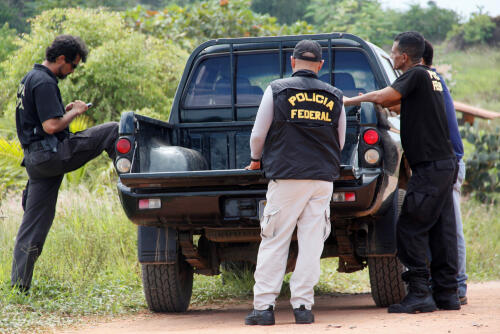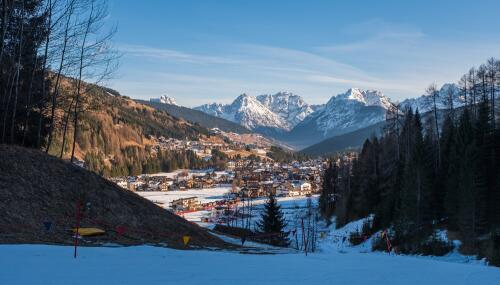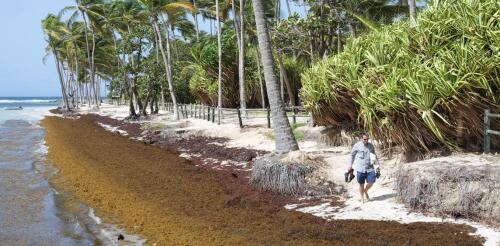environment
In Brazil, the police launched a large operation (called Operation Greenwashing), the largest of its kind ever built in the country, to dismantle "a criminal organization" that for over a decade allegedly sold carbon credits from illegally invaded areas for a total value of 34 million dollars (approximately 180 million reais).The operations are the result of an investigation lasting over a year which shows the links between REDD+ projects and a scam for the recycling of illegally obtained timber.At the center of the investigations are the Fortaleza Ituxi, Unitor and Evergreen project, all related to the Ituxi Group, one of the largest carbon credit projects in the Brazilian Amazon.The group is chaired by Ricardo Stoppe, whose suspicious activities had already ended up at the center of a journalistic investigation.The credits sold by the group were purchased not only by various Brazilian companies, but also by some international ones such as Toshiba, Spotify and Boeing. Stoppe...
Accepting the appeal advanced by the environmentalist associations Italia Nostra, Mountain Wilderness Italia and Lipu against a sentence pronounced by the Veneto Regional Administrative Court, the Council of State has restored the landscape restrictions on the Municipalities of Comelico and Auronzo (Belluno) placed in 2019 by a decree of the Ministry of the Environment.The administrative judges have therefore established that speculative projects cannot be started in a vast area of the Dolomite Park, a UNESCO heritage site, which constitutes one of the most important portions of our country from a landscape point of view.In this way, the construction of ski lifts and a ski connection between Comelico and Pusteria which had previously obtained the green light was officially called into question. In 2022, the TAR had agreed with the municipalities of Auronzo, Comelico Superiore, Santo Stefano di Cadore, the Province of Belluno and the Veneto Region - supported by Confindust...
Museums often celebrate new acquisitions, especially something rare or historic. In April 2024, scientists from the Natural History Museum of Jamaica and The University of the West Indies, Mona Campus accepted a very rare and historic specimen: a 16-inch lizard called the Jamaican giant galliwasp (Celestus occiduus). It had previously been stored in the Hunterian museum at the University of Glasgow in Scotland. “‘Celeste’ is home!” announced one Jamaican news outlet, invoking the nickname scientists had given the reptile, which they believed was a female. A close-up of ‘Celeste,’ the Jamaican giant galliwasp specimen repatriated to Jamaica. Jane Barlow/PA Images via Getty Images Why would a preserved lizard, some 170 years old, evoke such excitement? Celeste was collected in the 1850s and represents a species that was endemic to Jamaica but is now classified as cri...
The Caribbean’s sandy beaches, clear turquoise water and vibrant coral reefs filled with an amazing variety of sea creatures have long been the pride of the islands. The big three – sun, sea and sand – have made this tropical paradise the most tourism-reliant region in the world. But now, all of that is under threat. The explosive growth of a type of seaweed called sargassum is wreaking havoc on economies, coastal environments and human health across the islands. I study the intersection of critical infrastructure and disasters, particularly in the Caribbean. The sargassum invasion has worsened since it exploded in the region in 2011. Forecasts and the seaweed already washing up suggest that 2024 will be another alarming year. Sargassum levels were already high around many eastern Caribbean islands in late May 2024. Forecasters expect increasing sargassum washing up in June on many of the islands and in the Gulf of M...
Consumers’ love for avocados in the United States seems to know no bounds. From 2001 through 2020, consumption of this fruit laden with healthy fats tripled nationwide, rising to over 8 pounds per person yearly. On average, 90% of those avocados are grown in the southwest Mexican state of Michoacán. As with other foods that have become trendy, such as acai berries, or widely used, such as palm oil, intensive avocado production is causing significant environmental damage. My research on 20th-century Latin American environmental history examines how the transnational movement of people, foods and agricultural technologies has changed rural landscapes in Latin America. Currently, I’m writing a book on the development of a global avocado industry centered in Michoacán, the world’s largest avocado-growing region. Michoacán has a large Indigenous population and an economy based on agriculture, fishing and ranc...




